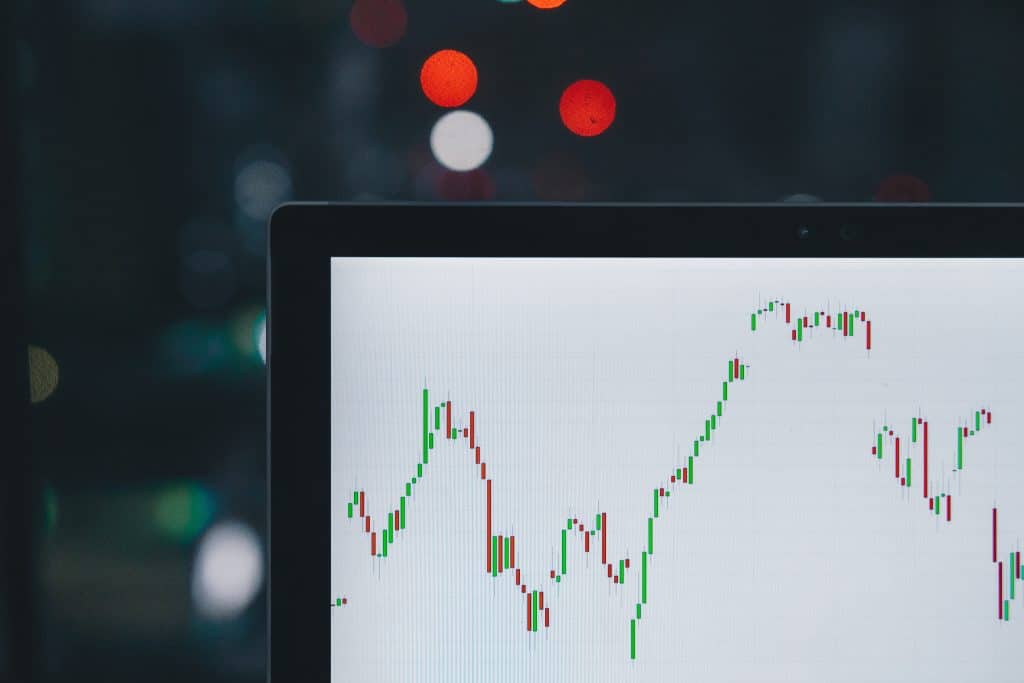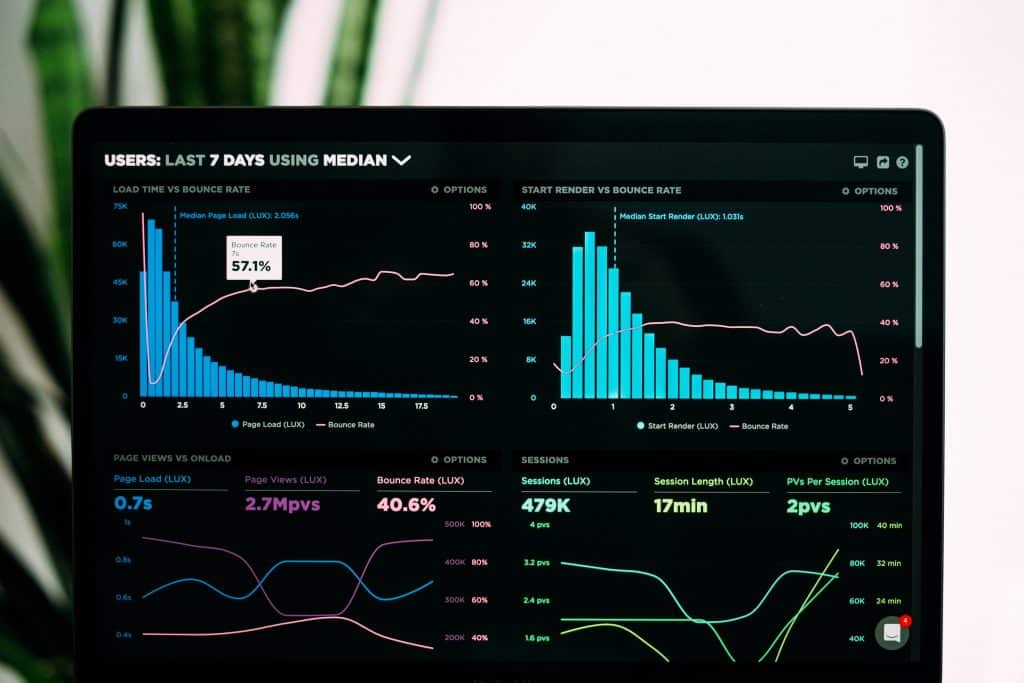What do you get when you combine programming, mathematics, and statistics? Data science. The term emerged relatively recently, and its primary use is to obtain information from enormous piles of data.
Imagine data scientists as miners: they first dig deep into big chunks of collected data, like minerals deep underground. Then, instead of pikes, they use algorithms to extract simple answers and affect business solutions.
No matter how big your company is, you need to leverage big data to simplify your processes. Using your data to make decisions can make a vast difference in the highly competitive business world.
So let’s look at some interesting facts about data science.
Top Stats and Facts About Data Science: Editor’s Choice
- The average salary for a data scientist in the United States is approximately $122,300 per year.
- The machine learning market will grow to $9 billion by 2022.
- More than 59 zettabytes of data were created, copied, consumed, and captured globally in 2020.
- The amount of data created over the next three years will surpass the volume created over the past 30 years.
- Facebook alone generates four petabytes of data per day.
- The employment of data scientists will grow by 22% in the US alone from 2020 to 2030.
- Every minute, consumers spend $1 million online.
- Businesses lose $3.1 trillion annually in the US because of poor data quality.
Fascinating Facts About Data Science
Data science is essentially a combination of programming, statistical, and scientific methods applied to data to extract valuable information and insights. This includes statistical and data analysis that helps a scientist understand it better.
Typically, data scientists employ machine learning principles to create AI programs that perform human tasks more efficiently.
1. Around 80% of leading companies that employed data science in 2017 reported over 5% revenue growth.
According to data science statistics, an estimated 44% of the participants in this study say their company’s growth has surpassed expectations. The results also show that 64% of respondents own a larger part of the market than their competitors.
Leaders in the market have also recorded higher data science and analytics budgets, amounting to approximately $2.2 million yearly.
2. In 2021, 29% of companies employed 100 or more data scientists.
In 2020, only 17% of organizations employed the same number of data scientists. On the other hand, 5% of companies had 10 or fewer data scientists employed in 2021, compared to 40% in 2020. This shows how statistical data science became essential in catering to business needs.
The number of employed data scientists increased by 76% year-on-year between 2020 and 2021—the average number of employees was 28 in 2020, as opposed to 50 in 2021.
3. The average salary for a data scientist in the United States is approximately $122,300 per year.
Data science job trends show that this job comes with enormous income potential. Of course, the salary can vary based on the industry, experience level, location, and other factors. The highest paying city for data scientists in the US is New York, where the average salary for this profession is $153,298.
4. 34% of respondents from a 2021 report said they always use Python.
Another 29% of those surveyed claimed they use Python frequently. Python has been one of the most popular used languages in data science for some time now. In 2022, PYPL ranked Python as the number one programming language for data science, with a 28.27% share. What’s more, it recorded a 12.1% rise over the course of the last five years.

Data Science Statistics vs. Artificial Intelligence
Data science plays an integral part in AI creation. We mentioned earlier that data scientists use machine learning algorithms to deploy different types of AI. Today, AI-powered technologies are everywhere, and the opportunities for their application are endless.
5. The number of organizations adopting AI from 2015 until 2019 increased by 270%.
Gartner’s 2019 CIO Survey, which involved 89 countries and all major industries, showed that the AI adoption rate tripled in 2018. This is a large-scale growth compared to 2015 when only 10% of surveyed companies claimed they used AI. This report’s big data statistics say a great deal about this trend, which will reach even faster growth in the coming years.
6. AI software will reach $110 billion in 2024, according to IDC.
In 2020, the estimations of the AI market were at $50.1 billion, with a CAGR annual rate of 20.1%. Data science facts from 2020 showed that enterprises employed AI applications mostly to automate human resources management, customer service, pharmaceutical research, and IT. Spending on these systems increases year on year since many companies are rushing to deploy AI to optimize their business processes.
7. By 2030, artificial intelligence could replace around 38% of all US jobs.
Besides the US, AI will automate 21% and 30% of jobs in Japan and the UK, respectively, while in Germany, this rate stands at 35%. Professions that are at the highest risk of being automated by AI are transportation and storage (56%), manufacturing (46%), and wholesale and retail (44%).

Striking Machine Learning Statistics
Data described using a statistical framework is the foundation of machine learning. Most people participate in machine learning processes daily. Or you still haven’t asked Google to open your favorite article?
8. The machine learning market will grow to nearly $9 billion in 2022.
Statistics for data science demonstrate that machine learning will expand at a CAGR of 44% between 2016 and 2022. The biggest revenue contributor will be the North American market, while the APAC region will emerge as the fastest-growing market. According to the forecasts, professional services will account for a large part of the market growth.
9. Netflix saves approximately $1 billion by using machine learning.
Netflix saves $1 billion every year due to its machine learning algorithm, which recommends TV shows and movies based on the subscribers’ preferences. Using statistical methods for data science, Netflix personalized search for its users and thus avoided canceled subscriptions and loss of revenue.
According to the forecasts at the beginning of 2020, the streaming giant invested $17.3 billion in content in the last year alone. This sum is expected to rise to $26 billion by 2028.
Inspiring Facts About Big Data
Are you curious to learn what “big data” stands for? What does data mean in science in general?
Data is a set of facts and statistics that is analyzed for a particular purpose. However, some chunks of data are so complex and vast that no analyst can process them with simple tools. Big data is the field where data scientists use more complex tools (e.g., AI and machine learning algorithms) to process these enormous stacks of data.
If nobody did this for social media data, how would Facebook, Twitter, and similar companies know what their users want and prefer?
10. Over 59 zettabytes of data were created, copied, consumed, and captured globally in 2020.
The amount of exchanged data increased in 2020, primarily due to COVID-19. Most employees worked remotely, sending and processing larger amounts of data compared to previous years.
The entire 2020 was all about data. The ratio of data created and captured to data consumed and copied stood at 1:9. Estimations showed this ratio would expand to 1:10 by 2024. COVID-19 also affected the amount of new unique data created. In turn, more data was replicated, resulting in the growth of the Global DataSphere. This growth is estimated to continue in the following years, with an estimated CAGR of 26% through 2024.
11. Approximately 54% of companies expect to move their big data infrastructure to the cloud.
Kyvos surveyed various organizations on big data adoption in 2018. The survey revealed that more than half of the respondents expressed the intention to move their data to the cloud in three years.
At the time, big data facts showed that only 39% of those surveyed were satisfied with their existing big data infrastructure. In addition, the cloud showed the potential to improve the scalability and rate at which they access and analyze data.
12. Four industries comprise 48% of the enterprise data sphere.
Financial services, manufacturing, healthcare, and media and entertainment are the largest data users. According to the current data science trends in healthcare, healthcare will have the highest CAGR growth rate of 36% through 2025, despite being the smallest of the mentioned industries. This is mainly attributed to the high implementation rate of machine learning and intelligence within diagnostic procedures and devices that collect patient information.
13. The amount of data created over the next three years will surpass the volume of data created over the past 30 years.
This is why learning about data science is exciting—the world will create more than three times the data over the next five years than it did in the previous five. As expected, the most significant boost in data creation happened in 2020 due to the COVID-19 pandemic. Furthermore, 181 zettabytes of data will be created in 2025, compared to 79 zettabytes in 2021.
14. Facebook alone generates four petabytes of data per day.
This data usually takes the form of message exchanges, photo and video uploads, comments, etc. Big data stores at Facebook process hundreds of thousands of queries per day. According to data science statistics, Facebook handles one million map-reduce jobs and 600,000 queries daily. In addition, “Hive,” its data warehouse, holds 300 petabytes of stored data across 800,000 tables.
15. Around 44% of companies in 2018 reported that it’s difficult to measure social ROI accurately.
Only 20% of marketing executives surveyed by MDG Advertising in 2018 showed that they could extract quantitative results on how social media affects their businesses. However, companies are not alone in this. An estimated 28% of marketing agencies encounter challenges calculating ROI for their clients, while only 17% of respondents expressed confidence about the data accuracy.

Fascinating Data Science Trends
Data science is evolving rapidly. The biggest driver behind this growth lies in the fact that companies want to adopt data-driven business models to improve their decision-making processes and efficiency of operations. Check out some of the trends shaping this field.
16. The employment of data scientists will grow 22% in the US alone from 2020 to 2030.
The rise of the need for digital technologies and big data is affecting data science job trends. Data scientists will be in higher demand than occupations in other fields in the years to come. According to the US Bureau of Labor Statistics, there were 33,000 computer and information research jobs in 2020. This number is projected to rise by 7,200 by 2030.
17. By 2023, there will be 5.3 billion internet users.
The statistics indicate that 66% of the world’s population will use the internet by 2023. Back in 2018, only 51% of people used the world wide web. Additionally, Cisco predicts that each person will possess 3.6 devices connected to the internet on average. On top of all this, around 70% of people globally will have mobile connectivity.
18. Productivity/embedded data is the fastest-growing data category, with an estimated 40.3% CAGR between 2019 and 2024.
According to trends in data science, there is a significant increase in creating entertainment data. IDC statistics show that entertainment data will amount to 40% of the Global DataSphere by 2024. Productivity/embedded data will occupy approximately 29%.
The biggest contributor to the surge of this data category is the more and more present video-enabled technology and the increased consumption of entertainment videos.
19. Healthcare providers will boost their IT budgets by 10% in the next three years.
Believe it or not, big data can help a great deal in establishing diagnoses. For instance, doctors can receive real-time data from different patients using a mobile app as an aggregator of all information.
On the other hand, current data science trends in healthcare indicate that AI innovations will be present in 90% of hospitals in the future.
20. 44% of employed data science professionals plan to seek employment in another company within the following year.
Respondents in the Anaconda’s 2020 State of Data Science Report indicated that job satisfaction in data science roles was not as high as it used to be. To illustrate, only 34% of the surveyed IT professionals mentioned they intended to continue working for their employer at the time.

Eye-Opening Data Science Statistics
Data is ever-expanding, and so is the need for data scientists who will analyze it. With so many people using the internet daily, these trends don’t show any signs of stopping.
21. Only 0.5% of all data was analyzed in 2015.
According to Professor Patrick Wolfe from London’s Big Data Institute, the faster the data generation rate, the lower our ability to analyze all of it. As a result, the amount of analyzed data in the upcoming years will shrink even further as more and more data is collected. However, the professor estimates that global GDP can increase by $10–15 billion over a few decades if we use our analytics and data efficiently.
22. About 60% of the world’s population spends time on the internet every day.
Data in statistics show that 4.5 billion users use the world wide web every day, and it’s safe to say that the number is increasing at a fast pace.
People spent 487 minutes online on average per day in 2020. The activities included shopping, browsing, posting photos to Facebook, uploading videos on YouTube, or having a Zoom meeting. To illustrate, Facebook users exchanged around 150,000 messages every minute, while YouTubers uploaded 500 hours of videos.
23. The global infrastructure of AWS is currently present in 84 availability zones around the world.
AWS serves approximately 245 countries and territories through its servers and data centers positioned in multiple locations, facts about data say. As of 2021, AWS was responsible for 13% of Amazon’s total revenue.
For ten years, the company was called “Leader” by Gartner, including its 2021 Magic Quadrant for Cloud Infrastructure and Platform Services. It ranked the highest in Completeness of Vision and Ability to Execute segments.
24. Businesses lose $3.1 trillion annually because of poor data quality in the US alone.
Inadequate data handling and poor results from processing can result in the loss of customer confidence. Reports state that poor data handling can cost one organization $9.7 million per year. Consequently, poor data management will slow down the development of IT solutions, automation, and AI adoption.
Data Science Statistics: The Takeaway
A lot of people wonder—is data science a fad? Despite the common belief that it’s a modern-age product, it has been here for a long time. We still don’t know much about data science, but one thing is for sure—it’s expanding at a rapid pace.
In combination with cloud technologies, big data will grow to an enormous scale, which can only mean the world will need more data scientists. Someone will have to handle all that information.
Frequently Asked Questions
Is data science a branch of statistics?
You don’t need a computer to do statistics, but you can’t do data science without one; the two are heavily intertwined. Data scientist vs. statistician—what is the difference? Both possess many similar traits and knowledge, but the differences lie in the amount of data analyzed, the modeling processes used, and the types of problems they tackle.
Data science is a complex, interdisciplinary field that encompasses statistics, machine learning, data analytics, deep learning, math, and similar areas. So in a way, statistics is just one of the skills required to be a good data scientist.
Is statistics good for data science?
Statistics theories play a decisive role in data science. Statisticians collect and analyze small amounts of data, usually through traditional methods. On the other hand, data scientists gather large amounts of unstructured and structured data and interpret it with different tools.
Without statistical research, there is no data science. It represents a solid basis for its more complex areas, providing methods for data structuring for further analysis. In a way, data science evolved from statistics and is still relying heavily on it. However, at the same time, it is also expanding into various other fields.
What math do data scientists use?
The type of math used depends on the job and level. Probability theory and statistics are high on the list of skills a good data scientist needs to have. Other crucial areas include discrete mathematics, calculus, and linear algebra.
Most machine learning segments are heavily based on linear algebra and use matrices to process data with many variables. When it comes to calculus, most data scientists deal with gradients and derivatives.
Does data science require coding?
You need to know various programming languages to become a professional data scientist. However, it’s not crucial to have superb coding skills. Most machine learning principles are already located in the libraries of the most common programming languages used in data science. These include Python, Perl, C/C++, SQL, and Java. Python is the most common coding language used in these roles.
Are statisticians in demand?
As a field, statistical data science is on the rise. According to the Bureau of Labor Statistics, the employment of statisticians in the US will grow by 33% over the next 10 years. With increasing volumes of digital data, there will be a growing demand for both data scientists and statisticians.
Based on the US News & World Report, data scientist is the number one best business job and sixth among the top 100 best jobs. Data scientists’ skills are required across all industries. Still, data science statistics show that the most prominent fields for them in the future will be biomedicine, human rights, and environmental science.
Algorithmia, Anaconda, Anaconda, AWS, BLS, BusinessWire, Cisco, Cisco, Datavercity, Domo, Entrepreneur, Facebook Research, Forbes, IDC, Indeed, Indeed, Investopedia, Kyvos, Markets and Markets, Market Watch, MDG Advertising, MedCityNews, PwC, PYPL, Seagate, Statista, TDWI, Towards Data Science, Variety
